Which Countries Celebrate the Lunar New Year?
6th Feb 2024
Are 1st January New Year celebrations not quite enough? No problem. Celebrate the Lunar New Year just like other two billion people worldwide. That makes up approximately 25% of the world’s population. Let’s look at what countries celebrate Lunar New Year, how they do it, and what cultural differences there are in these countries.
What Does the Lunar New Year Mean?
In this case, the beginning of the year comes according to the lunar or lunisolar calendar. Unlike the solar (Gregorian) calendar, which is based on the solar cycle, the lunar calendar is based on the moon’s phases. Since a synodic month (the period of time between two successive identical phases of the Moon) lasts an average of 29.5 days, the lunar calendar lags behind the Gregorian calendar by 11 days in one year. To harmonise the lunar calendar with the solar one, an additional month called Vaiśākha is added to it approximately every three years.
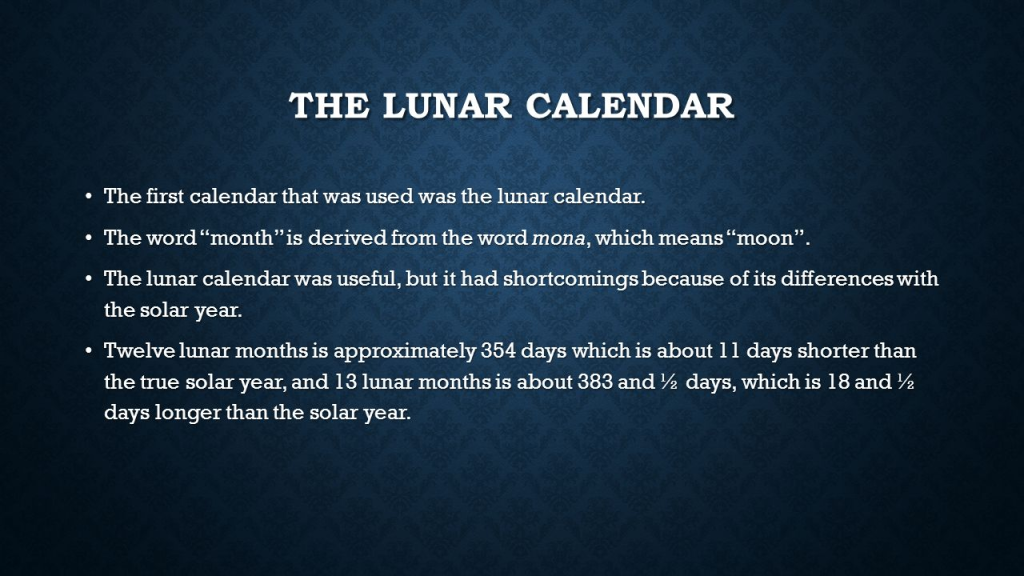
The definition of the first month of the lunar year varies across cultures. Usually, its the first or second new moon in the local calendar, so the event is celebrated on different dates and goes by different names.
Which Cultures Use the Lunar Calendar?
The following calendars are based on the lunar calendar: Chinese, Buddhist, Hindu, Tibetan, Islamic, and Jewish. These peoples count the chronology, relying on their cultural traditions and foundations, which have been formed over centuries and sometimes — over millennia.
Which Country Invented the Lunar New Year?
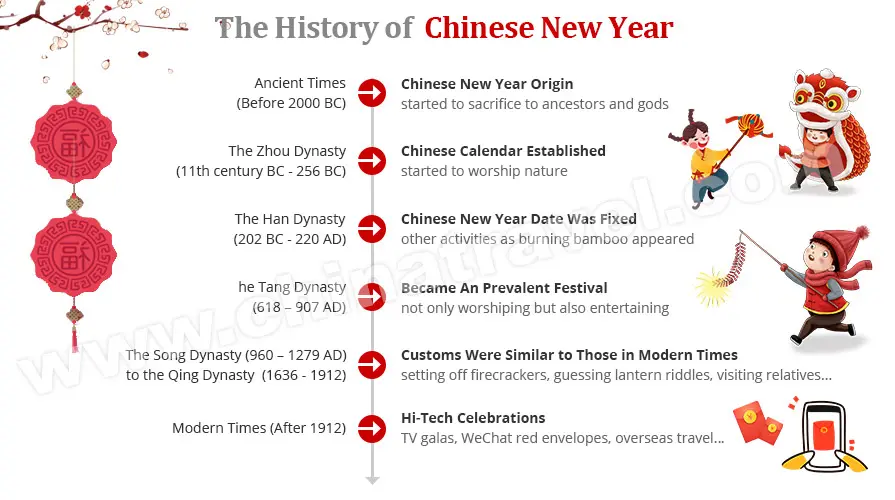
Many believe that the tradition of celebrating the beginning of the year, according to the lunar calendar, came from China. Indeed, the history of the Chinese holiday goes over 4,000 years back. The ancient Chinese gathered and celebrated the change of a year in autumn when the harvest ended. They invented and associated the Chinese Zodiac with the 12 months, a tradition adopted by other Asian peoples.
In 104 BC, Emperor Wu of the Han Dynasty officially approved a calendar reform that fixed the beginning of the year on the second new moon after the winter solstice. Since then, the celebration time in China falls on one of the days between January 21 and February 21.
The historical heritage, as well as the large number of Chinese migrants who have assimilated with other nationalities over the centuries, have made the holiday very popular worldwide, which is why many consider Lunar and Chinese New Year the same holiday. To understand why this opinion is wrong, read our feature article on this topic.
How Many Countries Celebrate Lunar New Year?
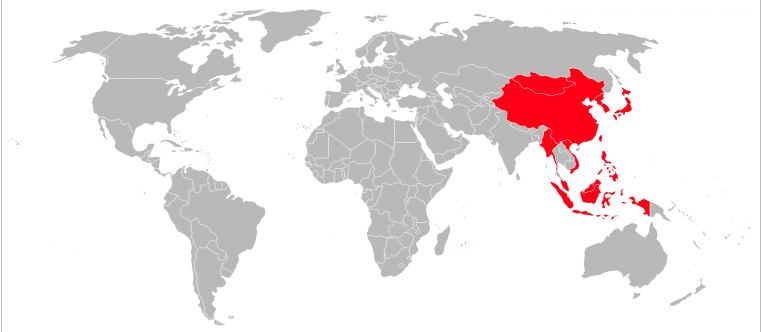
Credit: ericbrightwell.com
These are almost all countries in East Asia. Also, this holiday, in one form or another, is unofficially celebrated in many cities in Europe and the United States, where the Chinese, Islamic, and Jewish diasporas are widely represented. Let’s find out who celebrates the Lunar New Year and what traditions exist for this special event in different peoples and countries.
China
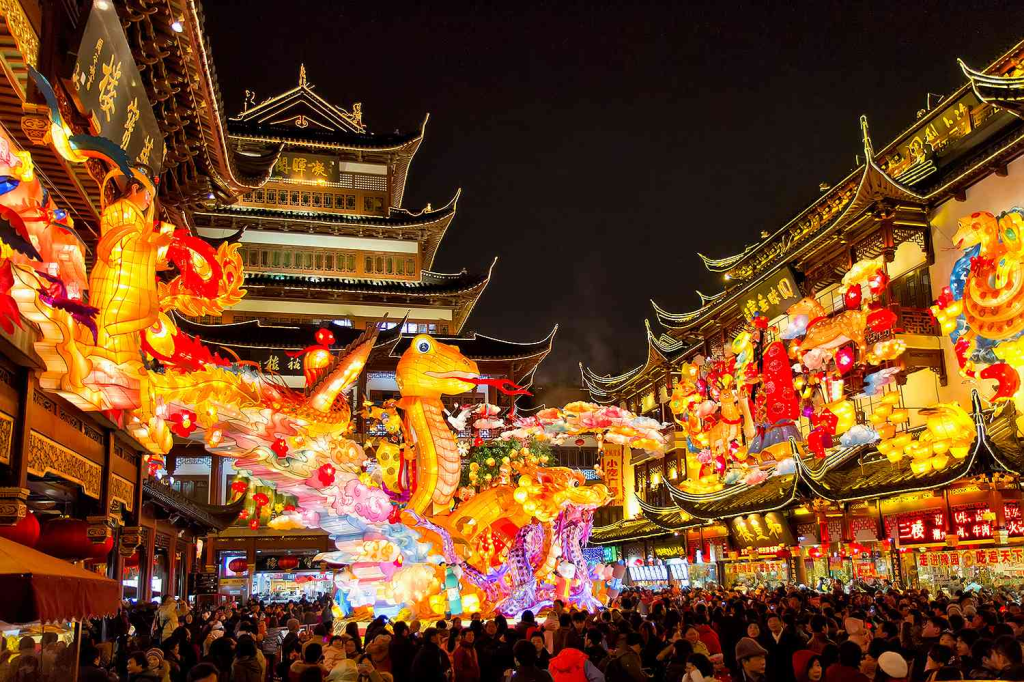
Chinese New Year is called Chūnjié (Spring Festival). This is the longest and grandest holiday in the Celestial Empire. How long does the Lunar New Year last there? 15 days — from the eve of festivities to the Lantern Festival. On these days, the Chinese gather with family and friends, visit temples, set off fireworks and salutes, and organise carnivals and parades with dancing.
One of the main holiday symbols is the use of red colour, which, according to ancient legend, drives away evil spirits. The Chinese decorate their houses and streets with red lanterns, flowers, posters and inscriptions with wishes. It is also customary to give each other red envelopes with money.
A traditional holiday dish is a dumpling fried with various fillings that are shaped like an ancient Chinese coin, standing as a symbol of wealth and prosperity. Dishes made from fish are also popular, as they represent abundance and good luck (the Chinese character for “fish” is read the same way as the character for “abundance”).
In 2024, the beginning of the holiday falls on February 10. According to the Chinese Zodiac, this is the Year of the Dragon.
Vietnam
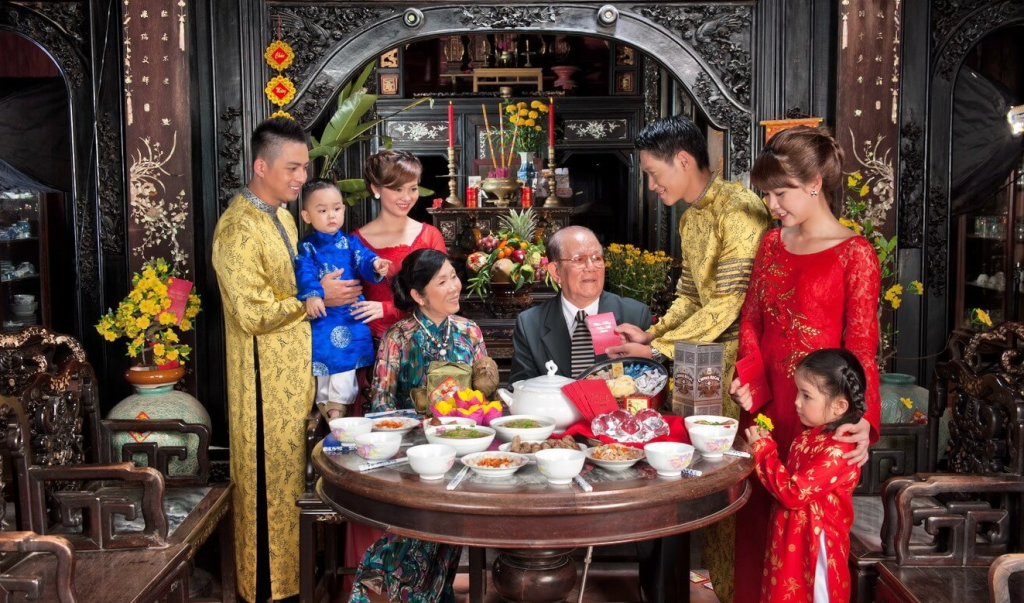
In Vietnam, the festival is a national holiday called Tết Nguyên Đán or simply Tết. This is a time of fun, joy, and hope when the Vietnamese strive to start over with a clean slate, forgetting past grievances and adversities. How long is Lunar New Year celebrated in Vietnam? From five to seven days. On these days, people clean their homes, buy flowers and gifts, cook traditional dishes and visit family and friends.
The main symbols of Tết Nguyên Đán are yellow and red colours, which represent happiness and good fortune. Vietnamese people decorate their homes with fresh or artificial flowers such as May rose, chrysanthemum, orchid, bamboo, and peach. Also common are dwarf trees with oranges or tangerines, which symbolize wealth and abundance.
Traditionally, the festive table includes Banh chung — a rice cake stuffed with beans and pork wrapped in a banana leaf. It is boiled in a cauldron for several hours and served with fish sauce. Another popular dish is caramelized pork with eggs, which is made from meat, sugar, soy sauce and coconut juice.
Cambodia
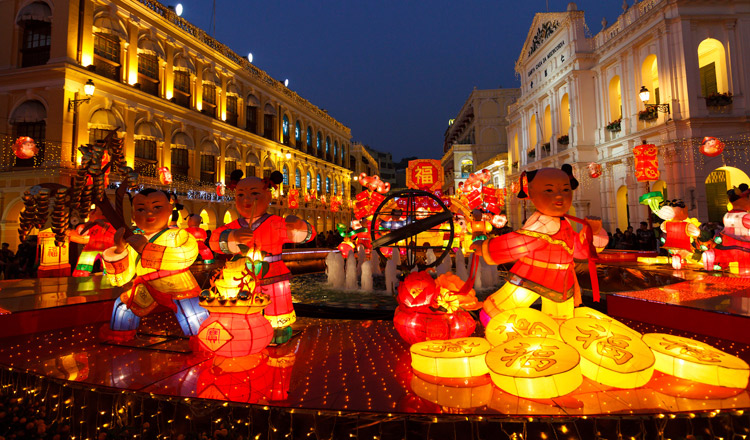
The beginning of the Lunar Year in Cambodia falls in mid-April and is celebrated for three days. This is the most important holiday for the Khmer people, the national people of Cambodia. It symbolises the end of the harvest season and the beginning of a new cycle of life.
On the first day, people visit temples to worship Buddha and thank him for his teachings. They also wash their faces, torsos, and legs with holy water to attract good luck.
On the second day, people make charitable donations to the poor, homeless, and needy, bringing food, flowers, and candles to the graves of their ancestors.
On the third day, people bathe Buddha statues with scented water to show their respect and ask for protection.
During the holiday, people also organise various games, dances, and musical performances. One of the most popular games is Chol Chhoung (ចោល ឈូង), in which two teams throw sticks and attempt to catch them. Another game is Bos Angkunh, in which people throw clay pots filled with water and coins, and whoever breaks the pot wins a prize.
Thailand
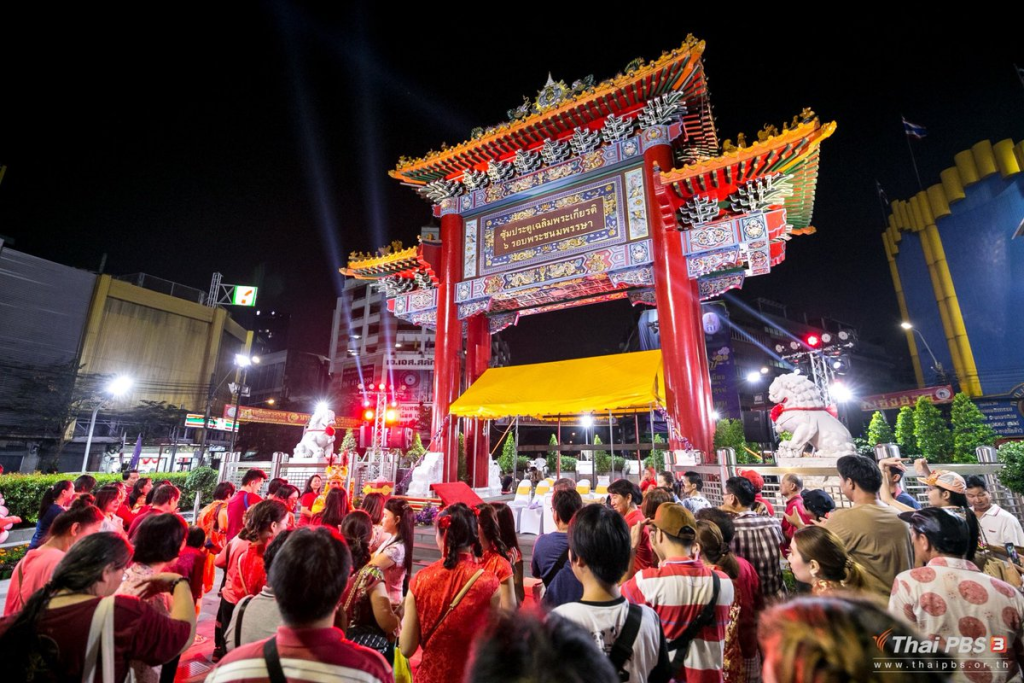
Songkran is celebrated from April 13 to 15 but may last longer in some regions of Thailand. What does Lunar New Year mean for Thais? Songkran means “transition” in Sanskrit and symbolises the changing of the seasons and the animal sign of the Chinese Zodiac.
This is a very fun and wet holiday. Thais pour water on everyone around them, wishing them happiness and prosperity. Water has a deep meaning in Buddhism; it cleanses from sins and misfortunes. Plus, it’s a great way to cool down in the heat.
Songkran is also a festival of love and respect for elders, relatives, and Buddha. Thais visit Buddhist temples, offer alms to the monks, wash Buddha statues and the hands of their elders with fragrant water, and bring them blessings and wishes. They build small stupas out of sand and decorate them with flowers and candles to show their respect for Buddhist teachings.
Tibet
Losar, as it is called in Tibet, occurs in February or March and lasts three days. On the first day, they say goodbye to the old year and perform cleansing ceremonies, throwing out dough figures inhabited by evil spirits.
On the second day, people visit Buddhist temples, worship Buddha and local deities, exchange gifts and wishes, and decorate houses and streets.
The new cycle ends with the Chötrül Düchen holiday, when believers pay homage to Buddha, celebrating his miracles.
Do Koreans Celebrate Lunar New Year?
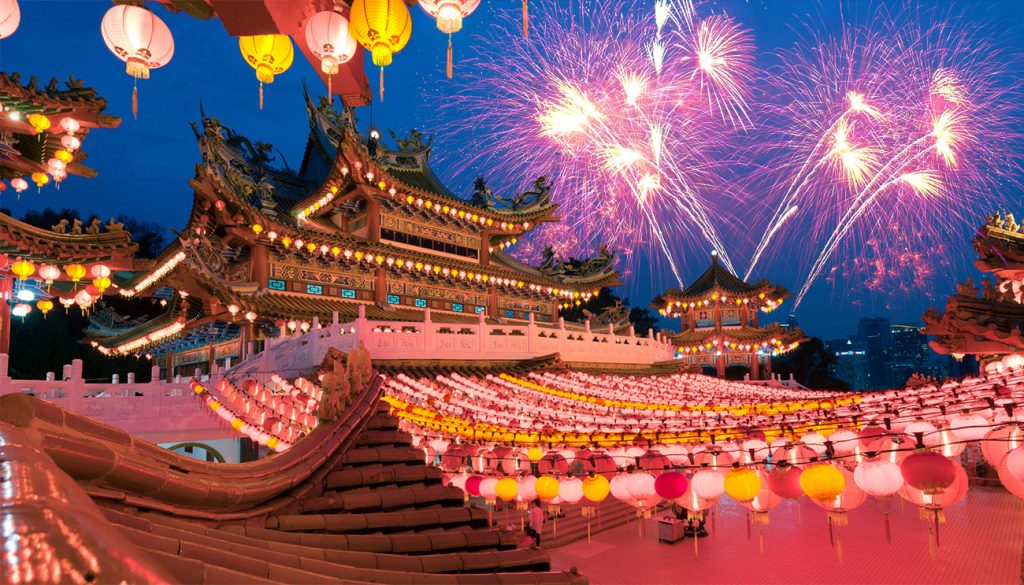
In Korea, the holiday is called Seollal and coincides with the first day of the Chinese lunar calendar. But the celebration here lasts only three days. Seollal is one of the main family holidays. Koreans strive to spend it with relatives, dress in the national hanbok costumes, visit the graves of their ancestors and congratulate their elders by worshipping them. In return, the elders give the young people money and good advice.
New Year’s breakfast necessarily includes Tteokguk, a rice cake soup with meat broth that symbolizes purity, longevity, and a new beginning. According to tradition, anyone who eats Tteokguk is considered one year older.
Among the popular Korean seasonal entertainments are Yut Nori — a board game with sticks, Jegichagi — football with a fabric ball, nol-ttwigi — a swing on a long board. Many Koreans also travel to the East Coast to see the first rays of sunshine in the new year.
Do Japanese Celebrate Lunar New Year?
In 1973, the Japanese government switched to the Gregorian calendar and since then, Lunar NY is no longer an official holiday. But in practice, Japanese traditions are still very different from the Western ones. The holiday here lasts a week, from December 28 to January 3, and is very festive. The Japanese wear bright kimonos, clean their homes, give each other presents and cards, visit temples, and participate in tea ceremonies and other rituals.
However, you won’t need to leave Japan if you want to celebrate Chinese NY. It will be enough to visit the city of Kobe on the island of Honshu, where you will get an almost exact copy of the Chinese holiday in terms of events and duration.
What Other Asian Countries Celebrate Lunar NY?
The beginning of the new lunar ‘cycle’ is widely celebrated in Singapore, Malaysia, Taiwan, the Philippines, Macau, Indonesia, Mauritius, Sri Lanka, Mongolia, and Laos. Most countries follow the Chinese lunar calendar, some others — Buddhist and Thai. Jews and Muslims have their own unique celebration customs.
Jewish Rosh Hashanah
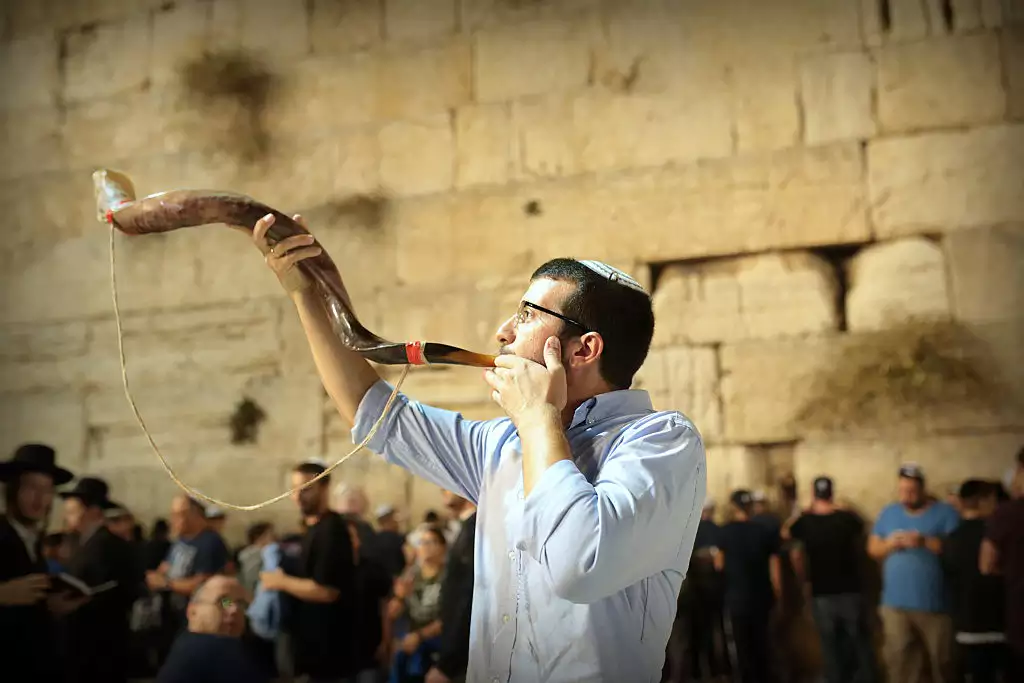
Jewish Rosh Hashanah falls on the autumn month of Tishrei in the Jewish calendar. The celebration lasts two days and makes the start of a ten-day period called “The Days of Awe.”
Why is Lunar New Year celebrated by Jews? Rosh Hashanah is not only the day of creation but also the day of judgment. On this day, Jews pray, repent their sins, and ask God for forgiveness and blessing. They also exchange congratulations and gifts and decorate their homes and tables. One of the symbols of the holiday is the shofar — a ram’s horn, which is blown in the synagogue.
The holiday ends with the Day of Atonement, Yom Kippur when Jews observe a strict fast and ask God to forgive all of their misdeeds.
Islamic Muharram

Although Muharram, the first month of the year according to the Muslim calendar, is considered the second most important holy holiday after Ramadan, it is not accompanied by any festive mass events. Muharram means “forbidden,” so many Muslims fast during this time and use it to reflect, thank Allah, take stock of the past year, and make plans for the future. Also during this period, many visit mosques to listen to a sermon about the Hijrah — the migration of the Prophet Muhammad and his companions from Mecca to Medina, which became the starting point of the Islamic chronology. In 2024, Islamic NY will begin on Sunday, July 7th.
Can Anyone Celebrate Lunar New Year?
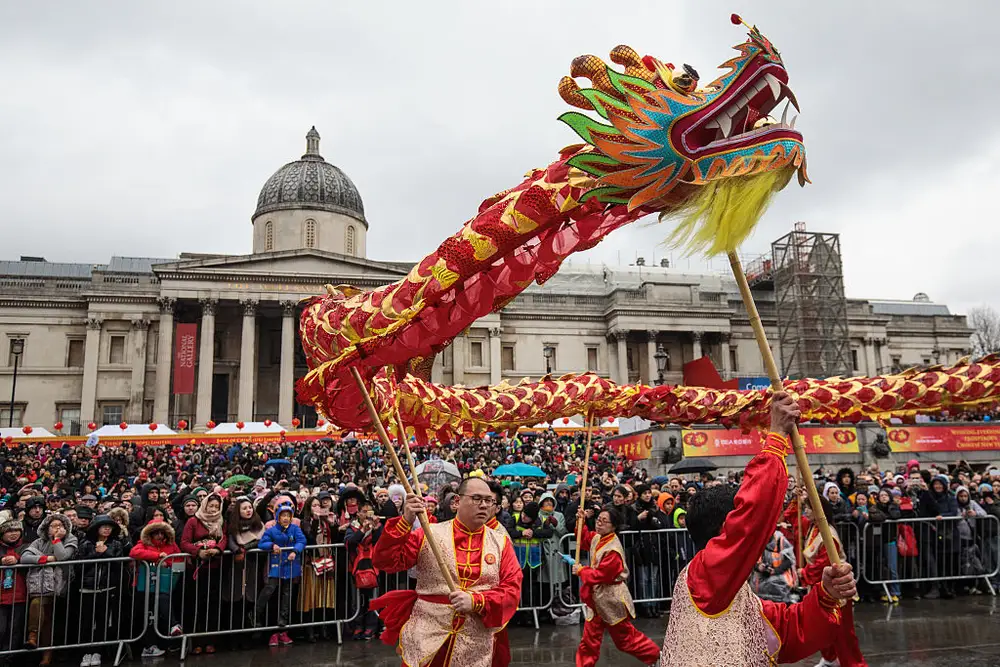
The Eastern holiday is not too common in the West, where the beginning of the year is traditionally considered to be January 1 in the Gregorian style. However, no one will stop you from celebrating it if you wish or if you observe your national traditions, regardless of the country you live in. Moreover, residents of many large cities in Europe and the United States not only respect the traditions of local diasporas but also participate in the organization and celebration of their national holiday. This especially applies to the Chinese diaspora, which is the largest abroad.
In the UK, the largest and most vibrant celebrations take place in London, Manchester, Birmingham, and Edinburgh. The event is also widely celebrated in Paris, Berlin, Madrid, New York, San Francisco, Sydney, Vancouver, etc.
Now that you know what countries celebrate Lunar New Year, you can immerse yourself in the unique atmosphere of the East, no matter where you are! And we at Orbital Today are glad we could help you with this.
References and Additional Information:
- Lunar New Year https://education.nationalgeographic.org/resource/lunar-new-year/
- 1st Muharram: Beginning of the Islamic New Year
https://www.islamic-relief.org.uk/resources/islamic-calendar/muharram/1st-muharram-islamic-new-year/ - Chinese New Year https://www.britannica.com/topic/Chinese-New-Year
- A Brief History of the Chinese New Year
https://worldtreasures.org/blog/a-brief-history-of-the-chinese-new-year - Rosh Hashana Judaism https://www.britannica.com/topic/Rosh-Hashana
- Lunar New Year: Fact Sheet https://crsreports.congress.gov/product/pdf/R/R46674
- Celebrating New Year in Japan https://www.jrpass.com/blog/celebrating-new-year-in-japan
![Beauty of the Pink Moon And Lyrid Meteor Shower in This Week’s Best Astrophotos [19-26 April] Beauty of the Pink Moon And Lyrid Meteor Shower in This Week’s Best Astrophotos [19-26 April]](https://orbitaltoday.com/wp-content/uploads/2024/04/Pink-Moon-is-on-its-way-above-the-mountains-1-300x300.jpg)
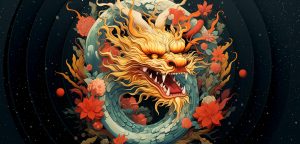
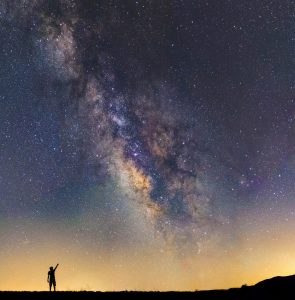



Thank you for your comment! It will be visible on the site after moderation.